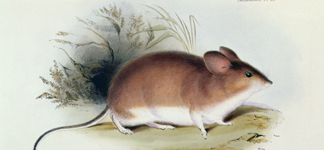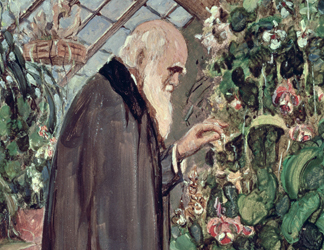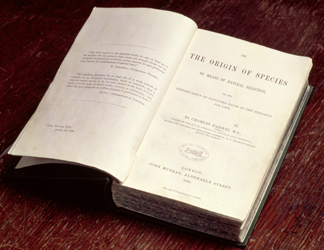Published 02/07/2009
In January 1839, Darwin married Emma Wedgwood and settled in London. Over the next twenty years, Darwin continued his research and published many books, including his narrative of the Beagle voyage. In late 1859, "The Origin of the Species" was published and was an immediate, if not controversial success. Charles Darwin died in 1882 and is buried in Westminster Abbey. Through the course of his life, Darwin wrote 25 books on the subjects of nature, natural selection and the transmutation of species; forever changing the way we look at the world and all its species.
| The voyage, which set sail on December 10, 1831, would last almost five years and would take Darwin and his fellow adventurers to South America, Australia, New Zealand, Africa and Polynesia. Perhaps the most remarkable aspect of this voyage was the exploration of the flora and fauna of the Galapagos Islands. |
Did you know that Bridgeman has a large collection of images of exploration and the natural sciences? Among the highlights are the following four major archives. The Royal Geographical Society is a comprehensive source for portraits of explorers, great voyages of discovery and antique maps. Oxford University Museum of Natural History specializes in scientific illustrations and photography of floral and insect specimens. The Natural History Museum of London is a great resource for illustration of prehistory, botany and creatures observed during the voyages of Captain Cook. The Science Museum, also in London, is an archive rich in scientific manuscripts, scientists and industrial innovations. |
|
In 1827, Darwin quit medical school for good and was accepted to Christ’s College at Cambridge University. At Christ’s College, Darwin met Revd. John Stevens Henslow, a professor whose lectures inspired Darwin to strive towards a natural science career. Darwin graduated from Cambridge in 1831 and in August of that same year, was invited to be a naturalist aboard the H.M.S. Beagle.
|
|

| This year, we celebrate two major anniversaries for Charles Darwin: the 200th anniversary of his birth and the 150th anniversary of the publication of "The Origin of the Species." Although destined to become one of the most influential voices in the understanding of humankind, Charles Darwin initially went to Edinburgh University in 1825 to study medicine. It was at Edinburgh University that Darwin joined the Plinian Society where he likely had his first exposure to the debate between scientific examinations of natural causes vs. divine intervention. In 1827, Darwin quit medical school for good and was accepted to Christ’s College at Cambridge University. Darwin graduated in 1831 and in August of that same year, was invited to be a naturalist aboard the H.M.S. Beagle. |







